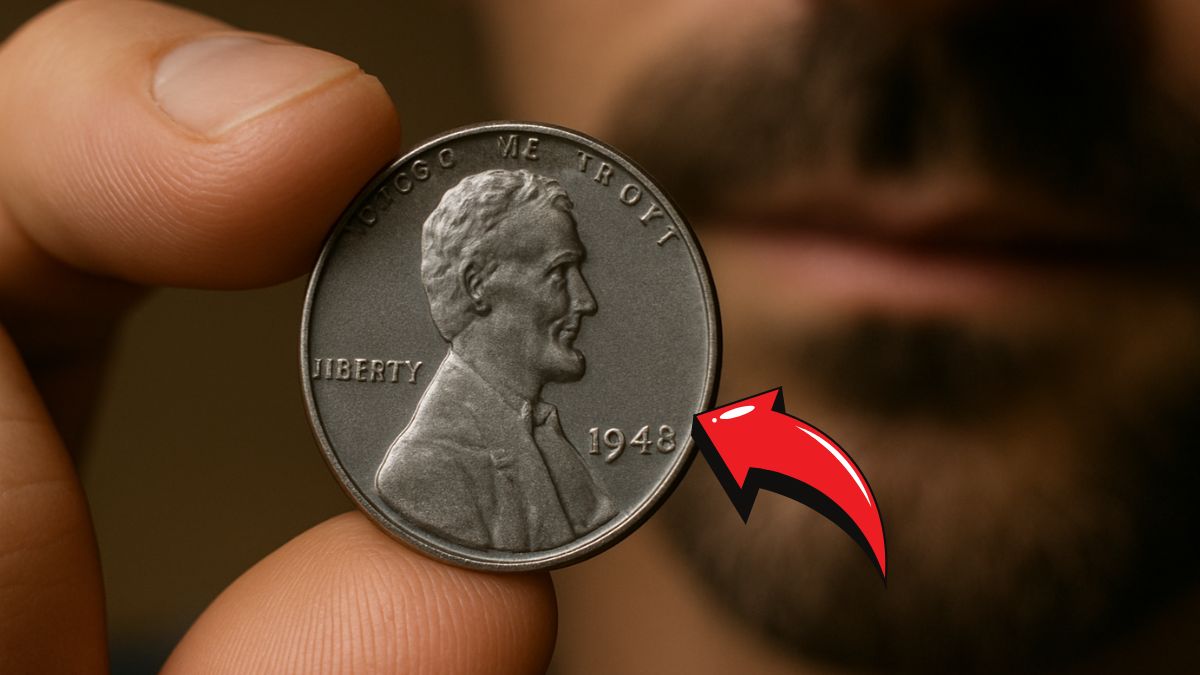In the realm of coin collecting, few coins have garnered as much attention and intrigue as the 1943 steel penny. Originally minted during World War II due to a copper shortage, these coins were produced using zinc-coated steel.
While over a billion were made, a rare few—the 1943 bronze pennies—were mistakenly struck on leftover copper planchets.
These error coins have fetched astonishing sums at auctions, with some valued at up to $3.5 million. Even more fascinating is the possibility that some of these rare coins might still be in circulation today.
The Wartime Necessity: Why Steel Pennies Were Minted
During World War II, copper was a critical material for military equipment, leading the U.S. Mint to seek alternatives for coin production.
In 1943, the Mint produced pennies using zinc-coated steel, resulting in a silver-colored coin distinct from the traditional copper penny.
These coins were minted at three facilities: Philadelphia (no mint mark), Denver (“D”), and San Francisco (“S”).
The Rarity: 1943 Bronze Pennies
Despite the shift to steel, a small number of 1943 pennies were mistakenly struck on bronze planchets, remnants from the previous year. These error coins are exceedingly rare and highly sought after by collectors.
Notably, a 1943-D bronze penny sold for $1.7 million, and a 1943-S bronze penny fetched $1 million in private sales. The value of these coins depends on factors like condition, mint mark, and provenance.
Comparison Table: 1943 Steel vs. 1943 Bronze Pennies
| Feature | 1943 Steel Penny | 1943 Bronze Penny |
|---|---|---|
| Composition | Zinc-coated steel | 95% copper, 5% tin and zinc |
| Color | Silver-gray | Reddish-brown |
| Magnetic | Yes | No |
| Weight | 2.7 grams | 3.11 grams |
| Estimated Quantity | Over 1 billion | Approximately 20 known |
| Auction Record | Up to $10,000 (high grade) | Up to $1.7 million |
How to Identify a 1943 Bronze Penny
Given their rarity and value, identifying a genuine 1943 bronze penny is crucial. Here are some steps:
- Magnet Test: Use a magnet; steel pennies will stick, bronze ones won’t.
- Weight Check: A bronze penny weighs about 3.11 grams, whereas a steel penny weighs 2.7 grams.
- Visual Inspection: Bronze pennies have a reddish-brown hue, unlike the silver-gray of steel pennies.
- Professional Appraisal: If you suspect you have a bronze penny, consult a professional coin grading service for authentication.
The story of the 1943 steel and bronze pennies is a fascinating chapter in numismatic history, blending wartime necessity with rare minting errors that have captivated collectors for decades.
While the chances of finding a 1943 bronze penny are slim, the possibility adds an element of excitement to every coin you encounter. So, next time you come across a 1943 penny, take a closer look—you might just be holding a small fortune in your hand.
FAQs
How many 1943 bronze pennies are known to exist?
Approximately 20 genuine 1943 bronze pennies have been authenticated, making them extremely rare.
Can I find a 1943 bronze penny in my pocket change?
While highly unlikely due to their rarity, it’s not impossible. Some have been discovered in circulation years after minting.
What should I do if I think I have a 1943 bronze penny?
Conduct preliminary tests (magnet, weight, visual inspection) and consult a professional coin grading service for authentication.
